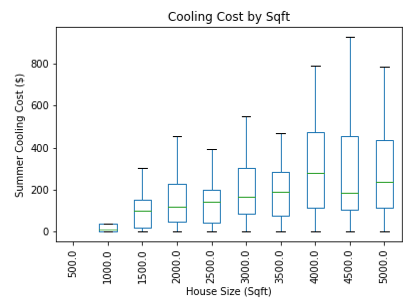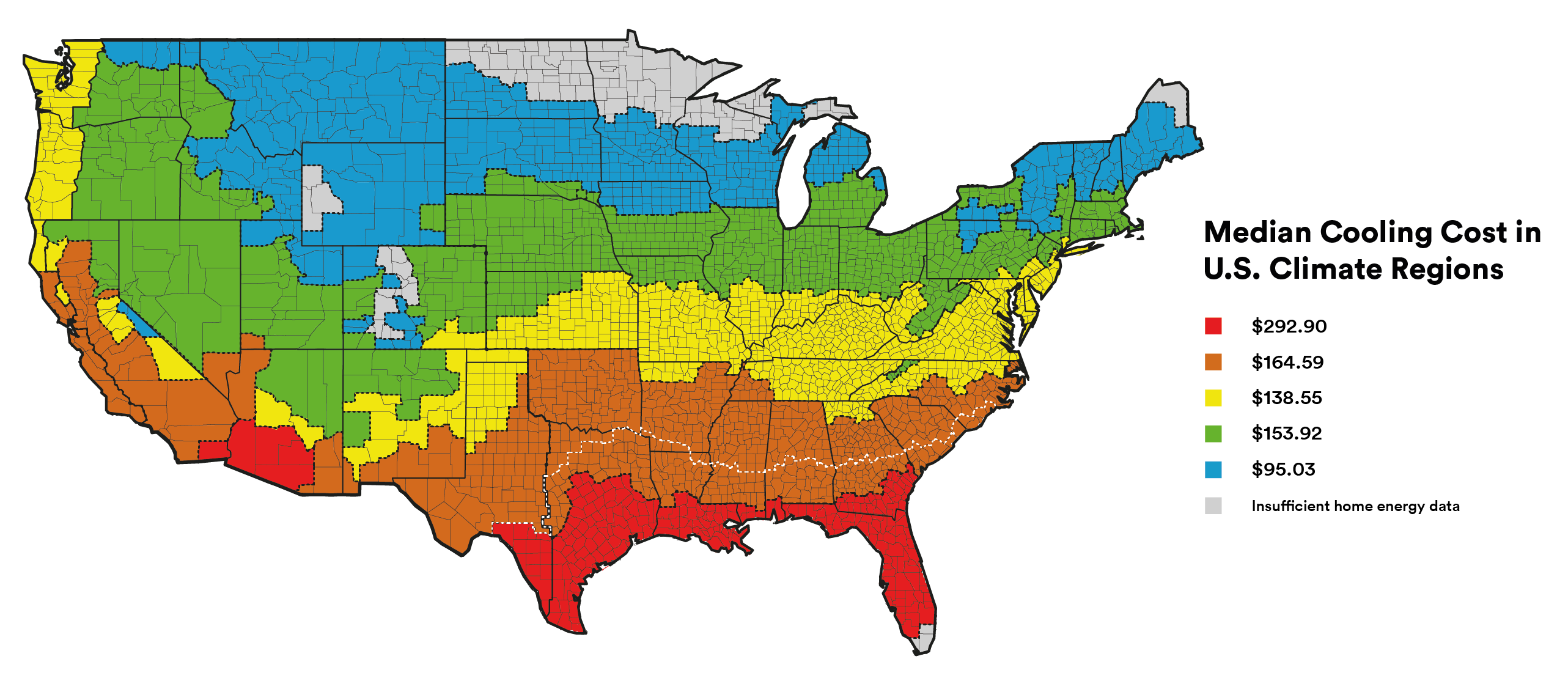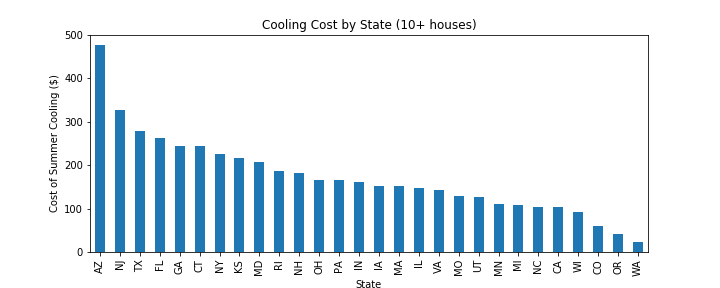Summer has finally arrived and with it comes the cost of cooling your home. Air conditioning can push your electricity bill up to its highest levels of the year. So we were curious — what makes the biggest difference in the cost of staying cool in summer? We analyzed 1,600 homes across the US and learned that where you live, the size of your home, and your utility’s billing rates all make a big difference in your summer utility costs.
Where is the most expensive place to stay cool in summer?
Residents along the country’s southern coast, from Texas to Florida, and in Arizona pay twice as much to stay cool in the summer as the average US resident and nearly triple the cost of residents in northern states like Maine and Montana. The median cost to stay cool in these hot, humid regions was $292.90 in summer 2018, compared to $147.82 across most of the US, and $95 along the Canadian border.
We found a 4x difference between most and least efficient homes in our analysis. If your cooling costs exceed the averages in your climate region, there’s a good chance you can make some changes to reduce them.
The 10 most expensive states this summer
Hot, sunny Arizona leads the country in the high cost of cooling at $477, followed by Texas, Florida, and Georgia. Surprisingly, New Jersey is the second most expensive place to stay cool ($327), due to a combination of higher-than-average AC usage and high utility costs, and Maryland ($208) was also among the top ten most expensive states. The top ten list also includes Connecticut, New York, and Rhode Island, all of which have warm summers and among the highest utility rates in the country. Kansas, known for its hot summer weather in Tornado Alley, was the only Plains state to make the top ten list.
Looking for an inexpensive place to stay cool this summer? Colorado, Oregon, and Washington are among the least expensive places.
Home size really matters
The biggest homes cost a lot more to cool. A 4,000 square-foot home costs $114 more over the summer than a 2,500 square-foot home on average — a 71% increase. Our data showed that larger homes have a wider range of cooling costs, suggesting there are more ways to waste energy with bigger HVAC systems (read on for tips to control HVAC costs).
A 2,500 square-foot home (which is close to the US median house size of 2,436 square feet) costs $133 to cool over the summer months, on average. Homes larger than 4,000 square feet jump to $227 in median cooling costs over the summer, a 71% increase, and the top 25% of those 4,000+ homes pay a whopping $463 on cooling for the summer, on average.

Even smaller homes can have a wide variability in cooling costs. To illustrate the potential range, Sense compared two 1,500 square-foot homes, one in Virginia and the other in Massachusetts, which are in similar summer climate zones. The Virginia home had a 240V central AC system that ran all day without cycling down and cost the homeowner $898 over the course of the summer. The Massachusetts home had 120V window air conditioning units that cycled down periodically and cost $138.
Keeping a lid on HVAC costs
Watch out for the following potential issues with your HVAC system, especially if you live in a big house:
- Oversized HVAC systems use a lot of power getting to the desired temperature quickly, which drives up energy costs unnecessarily. If you have a new system that you suspect is oversized, contact the installer to ask for a diagnosis and replacement. If the system is older, consider replacing with a right-sized system that will save you money in the long run.
- An undersized HVAC system will run continuously to get to the desired temperature, driving up costs. If your HVAC system is running continuously, it needs adjustment. Contact your installer or repair person.
- A right-sized system can run continuously, too, if it needs maintenance, the home is poorly insulated, or the thermostat is set too low.
- If your air conditioning costs are high, try setting your HVAC thermostat a degree higher each day to find a cost-effective middle ground between comfort and your electric bill.
- Are you cooling your entire home to the same temperature? Take advantage of HVAC zones to save money in seldom-occupied areas of the home.
- Don’t set-and-forget your HVAC. Use smart thermostats to set the temperature higher when you are away from home or in unoccupied rooms. Think about your day-to-day patterns. How much time do you spend in the basement? When are you using your bedroom?
With some thought and planning, you can reduce your cooling expenses substantially while staying comfortable in the summer heat.


